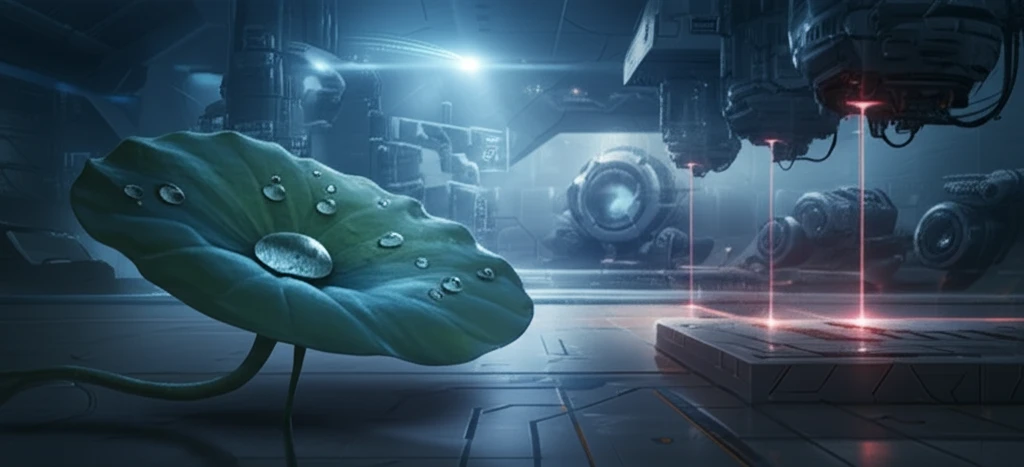
Nature's Inspiration: How Biomimicry is Revolutionizing Surface Technology
"From Lotus Leaves to Carnivorous Plants: Unlocking the Secrets of Liquid-Repellent Surfaces with Lasers"
For centuries, humans have marveled at the ingenious solutions nature has evolved to solve complex problems. Now, scientists are taking a page from nature's book, using a field called biomimicry to create innovative technologies. One exciting area of research focuses on replicating the liquid-repellent properties found in plants like the lotus and carnivorous plants, leading to the development of advanced materials with revolutionary potential.
This article dives into the fascinating world of biomimetic liquid-repellent surfaces, specifically how ultrafast lasers are being used to create these materials. We'll explore the science behind these natural phenomena, the laser techniques used to mimic them, and the incredible applications that are emerging as a result.
Get ready to discover how nature's wisdom, combined with cutting-edge technology, is paving the way for a future filled with self-cleaning surfaces, advanced medical devices, and much more.
What Makes a Surface Liquid-Repellent? The Secrets of Nature's Designs

Nature has perfected liquid repellency over millennia. Two prominent examples are the lotus leaf and carnivorous plants. The lotus leaf's superhydrophobic surface allows water to bead up and roll off, taking dirt and debris with it – a self-cleaning marvel. Carnivorous plants, on the other hand, employ slippery surfaces to trap insects.
- Contact Angle: The angle formed between a liquid droplet and the surface. Higher contact angles indicate poorer wetting and greater repellency.
- Surface Roughness: Microscopic or nanoscopic features that reduce the contact area between the liquid and the solid.
- Surface Energy: The inherent attraction of a material to liquids. Lower surface energy promotes repellency.
The Future is Slippery (and Clean!)
Biomimetic liquid-repellent surfaces hold immense promise for a wide range of applications. As research progresses and manufacturing techniques become more refined, we can expect to see these innovative materials transforming industries and improving our daily lives. From self-cleaning windows to advanced medical implants, the possibilities are as boundless as nature's imagination.
